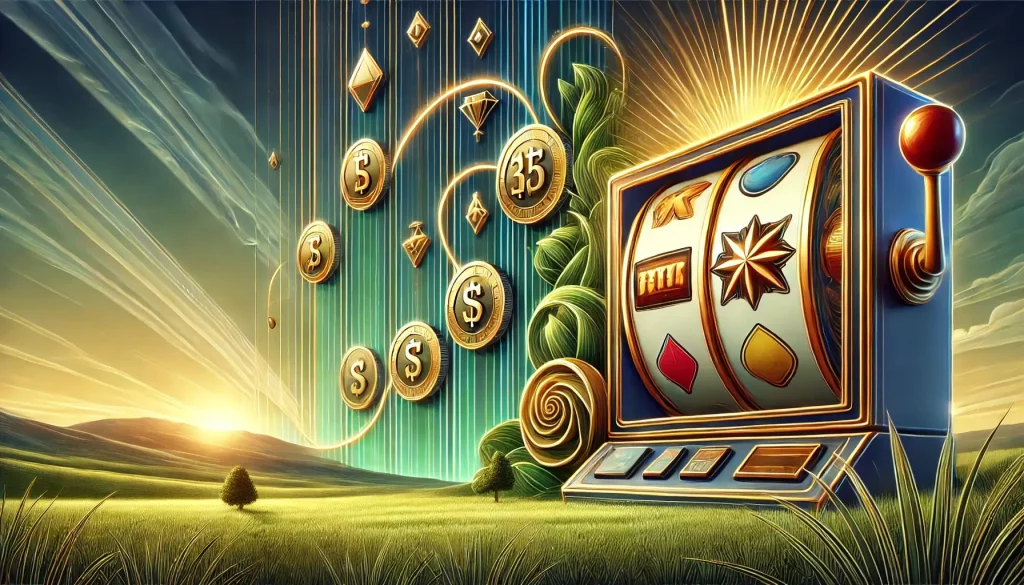Casino game volatility is an important concept that every casino games player should grapple with before he or she places a bet. In other words, it directly impacts how often you win, and how much you should expect to earn. Volatility can be a powerful thing, if you choose to learn about it and make smarter decisions with it, you can even improve your gaming experience. Let’s explore the details here.

What Is Casino Game Volatility?
Casino game volatility is how a game can be said to be risky, and how that then affects payouts. Low volatility games have frequent smaller wins and tend to be steady, and are a good game for players who don’t want their bankroll to go up and down too much with big wins. The other games are high volatility meaning that the payouts are higher when they come, but they are few and far between. For example, a low volatility slot will payout small amounts every few spins as you create a flat pattern of rewards. On the other side of the record a high volatile slot could take an extremely long time to win but if you get the combination perfectly you can also work on collecting a huge jackpot.
It’s not only slot games that are volatile, Blackjack and Roulette are volatile too. Take as an example, how when betting a single number in roulette the volatility is high because the probability of winning is small but the pay off is large. To improve the playing experience, it will be key for players to think about which games they want to play, and at what point the risk feels too much for them.
How Volatility Affects Your Winnings
Volatility directly determines frequency and size of your winnings. Your bankroll management and experience is affected by volatility. If you’re happy to play over a longer period of time, but don’t want to take financial risks with your money, low volatility games may work better. What this means is that you’ll get more frequent, smaller payouts that keep the game exciting and a stable balance. But high volatility games are designed for risk takers, prepared to wait longer without a win for the potential of a big win. These games can also be thrilling, and they take patience … and a bigger budget. A high volatility slot, for example, is a progressive jackpot that increases with every spin right up until a lucky player hits a lucky win.
Let’s consider an example: If you are playing a $100 budget low volatility game you will be playing for $5 – $10 each time. In a high volatility game that same budget could mean no wins for a few rounds but a $500 jackpot could make or break your session. Volatility is just a thing to understand and it helps you to make informed decisions on what games you want to play with what funds you have.
How to Identify a Game’s Volatility Level
It’s not always easy to identify how volatile a game is, but there are a few clues. Payout structure for most casino games is explained in the paytable. Low volatility games will pay out smaller amounts for more combinations, high volatility games will pay out more for fewer combinations. The RTP percentages can be an insight as well, but don’t confuse it with volatility. RTP is the stated percentage of money bet on a game that it will return over time, while volatility has to do with the distribution of wins. For instance, you have two games with very similar RTP of 96%, but very different volatility.
Game description also contains keywords or some phrase that hints at volatility level. A game terms out high and low volatility from ‘low volatility frequent payouts’ to ‘frequent payouts, high risk, high reward’. In some online casinos, like here, volatility ratings are even given directly in the game details, giving players an easier way to find the right match. Understanding the volatility of a game helps you choose games that fit your strategy: Or perhaps you prefer consistent returns, or maybe you’re chasing life changing jackpots.
The Role of Volatility in Long-Term Play Strategies
Volatility is heavy-handed in long term gaming. Those players who like to play low risk and play for long sessions should play low volatility games. They’re good as side games and casual play because these are games you can play with your bankroll for a bit getting small wins but stretching it a bit. High volatility games are much more calculated however. As such, the games have longer losing streaks and thus players should set a clear budget and should not exceed it. That being said, the potential rewards are great, and we need to have patience for dry spells.
Example: If targeting the high volatility progressive jackpot, the player might allocate part of their bankroll for these type of games, and to try to preserve the rest of the bankroll for low volatility games. By combining different games with different volatility, people can make sure they have a different experience in bringing risk versus reward. Volatility isn’t just about picking the right game, it’s also about having strategy that fits what you want to achieve, and that makes playing more fun.
Conclusion
Basically, Casino game volatility is a subject everyone needs to know about for all gameplay aspects, from wins to payouts. Knowing the different types of low, medium and high volatility games gives players a better way to choose which kind would suit their risk tolerance and what they are looking to achieve from playing games. Regardless if you prefer the steady returns of low-volatility games or chase the big jackpots, you’re better off knowing how volatility works if you want to have a more rewarding, strategic gaming experience. Make smarter choices here and enjoy the games that suit your style.